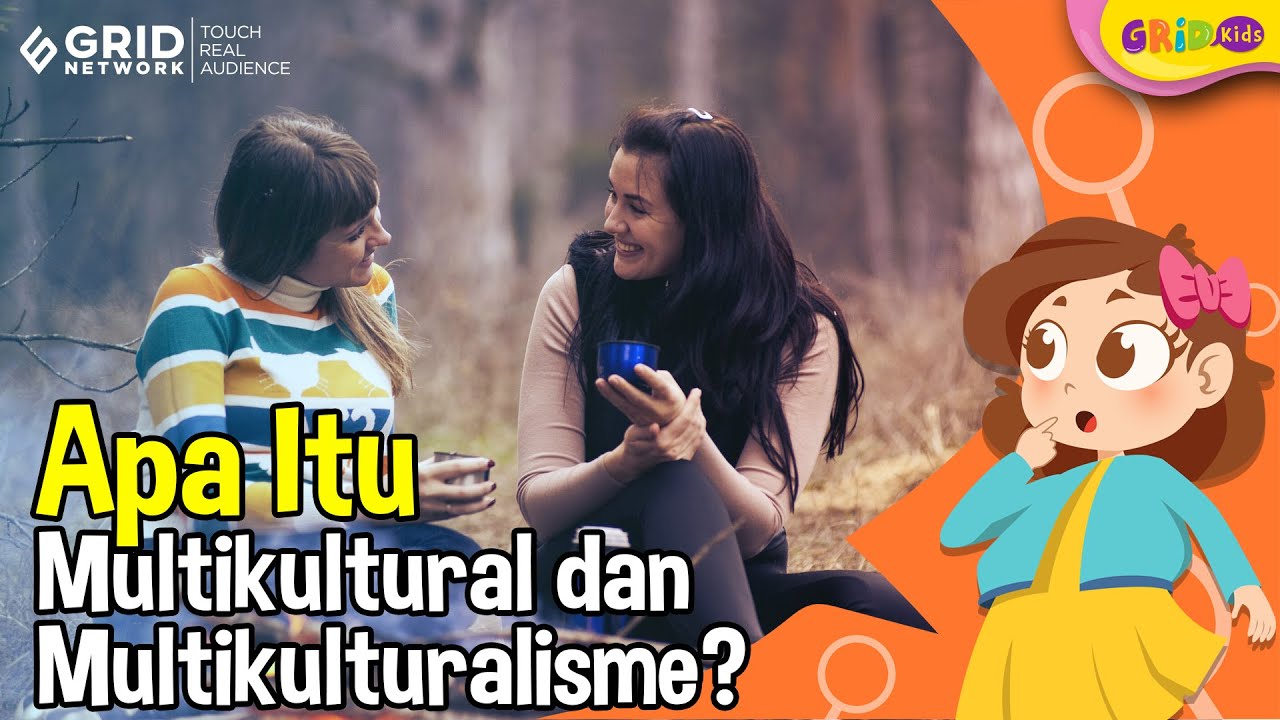ANTROPOLOGI XI BAB 2 PART 1
Summary
TLDRThis video discusses the concept of social institutions and multicultural society in Indonesia. It covers the definition and significance of social institutions, as well as the factors that contribute to the formation of a multicultural society, including geography, climate, and history. The video explores Indonesia's diversity, highlighting cultural, ethnic, and religious differences, as well as the seven elements of culture present in the country. Additionally, the video explains the processes of cultural contact, including diffusion, assimilation, and acculturation, and their impact on the development of Indonesia's multicultural identity.
Takeaways
- 😀 Social institutions are societal organizations that provide structure and function to meet social needs, defined by several scholars such as Koentjaraningrat and Soerjono Soekanto.
- 😀 A multicultural society refers to one that consists of various cultures, ethnicities, and religions living together, as seen in Indonesia's diversity.
- 😀 Indonesia's multiculturalism is shaped by its diverse ethnic groups, including Javanese, Bugis, Dayak, and many others, with each group having its own cultural practices.
- 😀 The geographical location of Indonesia, between two oceans and continents, has made it a trade hub and a place where cultural exchange has occurred for centuries.
- 😀 Indonesia's tropical climate and geographical features (e.g., coastal areas, mountains) influence the lifestyles, language, and behaviors of its people, contributing to cultural differences.
- 😀 The spread of various religions (Islam, Christianity, Hinduism, Buddhism, etc.) and ethnic groups (Mongoloid, Caucasoid, Negroid) throughout Indonesia has fostered its multicultural society.
- 😀 Indonesia officially recognizes six religions: Islam, Protestant Christianity, Catholicism, Hinduism, Buddhism, and Confucianism, contributing to its religious diversity.
- 😀 There are over 650 languages spoken across Indonesia, reflecting the linguistic diversity that is part of the country's multicultural fabric.
- 😀 The processes of cultural contact, such as diffusion, assimilation, and acculturation, are central to Indonesia's multicultural society and how different cultures influence each other.
- 😀 Diffusion is the spread of cultural elements, such as the Chinese influence on Indonesian culture, including the adoption of festivals and architectural elements like lanterns.
- 😀 Assimilation occurs when two cultures combine to form a new culture, exemplified by the creation of Dangdut music, blending Indian, Arab, and Indonesian traditions.
- 😀 Acculturation refers to the merging of two cultures without erasing the original elements, as seen in Indonesian mosques that blend Islamic and Chinese architectural features.
Q & A
What is the definition of a social institution according to Koentjaraningrat?
-According to Koentjaraningrat, a social institution is a system of behavior and relationships centered around social activities to meet specific needs in society.
How does Soerjono Soekanto define social institutions?
-Soerjono Soekanto defines social institutions as a collection of norms at various levels related to basic needs in society.
What is the main concept behind a multicultural society?
-A multicultural society consists of people from diverse backgrounds, such as different cultures, religions, ethnicities, and races, living together in a particular area, such as in Indonesia.
What geographical factors contribute to the multicultural society in Indonesia?
-The geographical position of Indonesia, located between two oceans and several continents, has made it a hub for trade, leading to cultural exchanges and mixed marriages, which contribute to its multicultural society.
How does Indonesia's climate and geography affect its multicultural society?
-Indonesia's diverse geography, such as coastal, lowland, and highland areas, as well as its tropical climate, influence the language, behavior, and communication styles of its people, contributing to the multicultural aspect of society.
What is the role of historical migration in shaping Indonesia's multicultural society?
-Historical migrations from various parts of the world, such as from China, India, and Europe, led to a mixing of races and cultures in Indonesia, further contributing to its multicultural population.
What is the relationship between religion and multiculturalism in Indonesia?
-Indonesia has six recognized religions: Islam, Protestant Christianity, Catholicism, Hinduism, Buddhism, and Confucianism. The spread of these religions, often through trade or colonial influence, has created religious diversity, with people living together in tolerance and solidarity.
How do cultural elements such as language contribute to Indonesia's multicultural society?
-Indonesia is home to over 650 languages, which reflects the cultural diversity of its population. Different ethnic groups communicate in various regional languages, making language one of the key components of Indonesia's multiculturalism.
What are the seven cultural elements of a multicultural society in Indonesia?
-The seven cultural elements in Indonesia's multicultural society include local languages, livelihoods, systems of knowledge, social organizations, tools and technology, religion, and the arts.
What are the three types of cultural contact processes in a multicultural society?
-The three types of cultural contact processes are diffusion, assimilation, and acculturation. Diffusion involves the spread of cultural elements, assimilation results in the creation of a new culture, and acculturation involves merging two cultures without losing their original characteristics.
Outlines

This section is available to paid users only. Please upgrade to access this part.
Upgrade NowMindmap

This section is available to paid users only. Please upgrade to access this part.
Upgrade NowKeywords

This section is available to paid users only. Please upgrade to access this part.
Upgrade NowHighlights

This section is available to paid users only. Please upgrade to access this part.
Upgrade NowTranscripts

This section is available to paid users only. Please upgrade to access this part.
Upgrade Now5.0 / 5 (0 votes)





